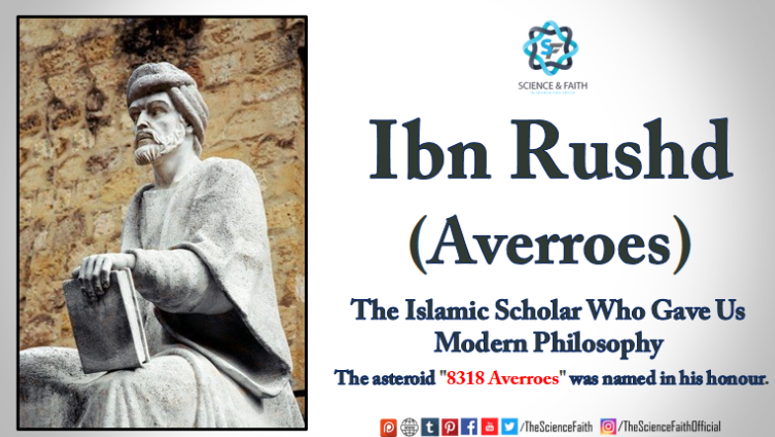 By Neenah Payne
By Neenah Payne
Americans are taught to revere Greek philosophers like Plato and Aristotle. We are told that after the fall of Rome about 500 AD, Europe fell into the “Dark Ages” for 1,000 years after which the Renaissance and the Enlightenment suddenly, miraculously emerged out of nowhere. There’s a lot omitted from that story. Recovering that missing history is important now to world peace.
Since the 9/11 “attacks” on the World Trade Center in New York City, America and Europe have been taught to fear the Muslim world and to see Arabs only as “terrorists”. The US has waged the endless War on Terror for over 20 years now at a cost of $18 billion. Australian journalist Julian Assange, founder of WikiLeaks exposed the many atrocities of that war and has been punished for telling the truth by years of imprisonment and the threat of extradition to the US where he faces 75 years in prison.
So, the West’s very deep debt to the Muslim world will come as a surprise to most Americans and Europeans. For almost 800 years when Arabs ruled Spain from 711-1492 AD, Muslims brought Europe out of the Dark Ages into which it had fallen after the decline of Rome in 500 AD. Muslims created the modern world through the introduction of the Arabic numbering system, algebra, paper, books, libraries, universal literacy, schools, universities, paved and lighted streets, heated and airconditioned homes, innovations in architecture, the scientific method, medicine, hospitals, coffee, irrigation, gardens, and many nutritious foods including oranges, rice, sugar, bananas, lemons, limes, and watermelon.
Rice and beans are now staple foods in all Caribbean and Central and South American countries as well as the US. How African Rice Growers Enriched America! shows that rice made South Caroline fabulously wealthy.
When Rice was King- South Carolina’s Rice Plantations explains that by the Revolutionary War, skilled African agronomists had transformed the Carolina low country in a monumental work to grow a crop that made Charleston, SC the richest city in America — with twice the wealth of New York or Philadelphia. “Carolina Gold” was considered the world’s best rice! Coveted worldwide including by the royalty of Europe and Asia for its superior flavor and texture, “Carolina Gold” was the crop that defined the South Carolina economy for two centuries.
When Arabs introduced cotton to the West, it revolutionized clothing. Without cotton, we would still be wearing wool all year! How King Cotton Fueled Industrial Revolution shows that cotton made the American South fabulously wealthy for two centuries. Cotton is the world’s most important textile crop today. Thomas Jefferson said: “The greatest service which can be rendered any country is to add a useful plant to its culture.”
Yet, it was President Jefferson who helped erase the memory of the Moors’ great gifts to the West. After Jefferson had the Marines defeat the Moors in the Battle of Tripoli in 1804, there was no one left on the world stage to tell the truth of the Arab contributions to the Western world. That allowed The Myth of White Supremacy to claim that Europe had contributed everything of value to civilization and no other culture had contributed anything. However, now with the rise of the Global South, the truth is re-emerging in books, articles, websites, and videos revealing the inspiring story of our real history.
Muslim Impact on European Enlightenment | Dr. Safiyyah Ally 12/23/20
Growing up in #Canada, we are taught so much about our European influence. But what about the #Muslim influence on Europe? Dr. Safiyyah Ally says that the Enlightenment might have looked totally different if not for the impact of Muslims. While Europe was entering the Dark Ages, the Muslim world was rising up. Muslims managed to keep alive and cultivate much of the diminishing culture and scientific knowledge that the West had worked so long to achieve.
Muslims preserved and translated many of the ancient texts that inspired Renaissance and Enlightenment thinkers. They also contributed to the invention of the scientific method and the modern university system, which led to the Scientific Revolution. Muslim thinkers made rapid advancements in the fields of science, math, and medicine. It is exciting to learn that this period of Western development owes a lot of its innovation to #Islamic discoveries!
How 800 Years of the West’s History Are Hidden Now
Peter Gandy, co-author of The Hermetica: The Lost Wisdom of The Pharaohs, cites the quote:
“A nation without a history is like a man without a memory”. Gandy points out: “The correct memory of who we are, where we’ve come from is essential to understanding who we are right now, and where we are going. We live in a culture that has been so bowdlerized by the Christian takeover which has endured for a couple thousand years and has given us a completely mistaken identity of who we are. Our memory is wrong. Your memory is your identity. Without a correct memory, we don’t know who we are or where we’re going. So, for me, history is a sacred science. Also, it is about giving credit where credit is due.”
The Clocks of the Andalusian Ibn Khalaf al-Muradi
After the incorporation of the heritage of science and technology inherited from ancient cultures, the scientific tradition of the Islamic world developed genuine and original knowledge in the field of science and technology. Unfortunately, only a meagre mention is made in school curricula and popular history of science books of a great many contributions, discoveries, and inventions from Muslim civilisation.
The figure below shows diagrammatically a rudimentary timeline of the various civilisations that contributed over the centuries after ancient Mesopotamia, Egypt, and earlier civilisations. The grey colours are what is taught by our educational establishments, showing a gap of more than a thousand years that used to be referred to as the Dark Ages (or more recently, the medieval ages).
As one can see, the gap in the grey misses the Indian, Persian, Chinese and in a big way, Muslim civilisation, shown in yellow. It is surprising to notice that Al-Andalus (Spain and Portugal when they were Muslim) are not included, albeit European. If one includes the scientific advances from Al-Andalus, Europe would not have the so-called Dark Ages. Such a major anomaly must be corrected for a stable future socio-political environment in Europe and America.
Grandfather of European Enlightenment: Ibn Rushd/Averroes
The Genius of Islam explains that because of the Arab scholars Ibn Sina (980-1037) and Ibn Rushd (aka “Averroes” 1126- 1198), Europe was able to develop the intellectual movement that valued the witness of reason and evidence of the senses to reach the truth — the development of the scientific method at the heart of science today. It points out, “It was the central idea of the European Renaissance.” See Ibn Sina/Avicenna: Founder of Western Medicine.
The grandfather of the European Enlightenment was Muslim
Ibn Rushd: A key conduit between Dark Ages and Enlightenment of Europe
It’s easy to think about the history of philosophy in European terms, but with a closer look, there are countless Muslim thinkers who developed many ideas central to modern scientific reason. Ibn Rushd was one of them. Known as the Prince of Science, Ibn Rushd was a Renaissance man 300 years before the birth of the European Renaissance. His work in the fields of philosophy, Islamic law and jurisprudence, medicine, astronomy, mathematics, physics, and geography was distinct and intellectually sharp. That’s why the Muslim polymath is considered to be one of the greatest Islamic philosophers…. Ibn Rushd, whose education was diverse and spread across different fields, stood out as one of the greatest scientific minds.
The Philosophy of Averroes (Ibn Rushd) 8/5/23
Here we will travel back to the year 1150 of the common era in order that we may illuminate one who is perhaps the most influential figure of Islamic philosophy. He was known to his people as Abu al-Walid Muhammad ibn Rushd and to the western philosophic tradition as simply Averroes.
Who was Ibn Rushd? The ‘bridge’ between Islamic and Western philosophy
The Andalusian scholar preserved Aristotelian philosophy and left a polymathic legacy that influenced the Renaissance. Throughout the 13th century, followers of Ibn Rushd, known as Averroists, were the subject of official condemnations by the church, which took issue with their ideas on the eternal nature of the universe and that all human beings shared the same intellectual capacity.
Despite the church’s rebuke, Ibn Rushd’s approach, which became accessible due to Latin translations of his work, won him many followers, both Catholic and Jewish, in the centuries after his death.
Their efforts would form part of the intellectual flourishing in Europe that came to be known as the Renaissance… Ibn Rushd’s contributions to medicine include a description of symptoms of Parkinson’s disease, an explanation on the causes of stroke and the discovery of the photoreceptor function of the retina….Besides his vast legacy to science, religion and philosophy, Ibn Rushd also took an interest in music and language.
Averroes – The Great Muslim Philosopher Who Planted The Seeds of the European Renaissance
Abû al-Walîd Muhammad Ibn Rushd, better known in the West as Averroës, but also in medieval times as Avén Ruiz and Averrhoes, was born in 1126 A.D. in Cordova, once the illustrious capital of Moorish Spain….
In the Middle Ages, his ideas influenced the transformation of thought in medieval Europe. The last of the great Muslim thinkers, his beliefs were to have an effect of the minds of many of the Middle Ages intellectuals, living well beyond the borders of Moorish Spain….Through these translations of Ibn Rushd’s works, the subject of harmony between reason and faith was passed on to Christian Europe, giving impetus to the development of rationalism….
In the ensuing centuries, Ibn Rushd’s works were taught in the universities of Christian Europe, unleashing a movement in the West that led to the victory of Aristotelian ideas over the once prevailing Platonic thought.…
St. Thomas Aquinas’s Summa Theologia was to a great extent inspired by the views of Averroës, even though it also took issue with some of these views. Many of the free-thinking Latin-Christians of Europe felt him to be one of their own, even hispanizing his name to Avén Ruiz.…
Averroës remains one of the greatest of the Islamic philosophers….With Averroës, philosophy reached its epitome in Muslim Spain. But his ideas were far too advanced for the world of his time…. With the passing away of what some historians say was the most eminent philosopher who wrote in Arabic, the long practised toleration of the Muslims in the Iberian Peninsula came to an end.
Yet, thanks to Averroës, the seeds of the Renaissance were sown in Europe.
Why Is a 12th Century Muslim Jurist Depicted in a 16th Century Pope’s Library?
The School of Athens, completed between 1509 and 1511, is a fresco by Italian Renaissance artist Raphael as part of the artist’s commission to decorate the rooms in the Apostolic Palace in the Vatican.
What is the Muslim philosopher Averroes doing in the famous fresco “The School of Athens” of the Italian Renaissance painter Raphael? The painter brought together all thinkers and scientists that influenced the West. So, it’s no surprise that Plato and Aristotle are in the centre of this 16th century painting.
More surprising is that two ‘Eastern’ persons are made part of the school: Zoroaster and Averroes….The last and most famous Muslim philosopher was Ibn Rushd, better known under his Latin name Averroes. He was born in 1126 in Cordoba, the capital of Al Andalus, which had become, alongside Cairo, the intellectual centre of the Muslim World after the decline of Baghdad. In Europe, Averroes was called ‘The Commentator’ as he had written comments on Aristotle more extensively than anyone else. Moreover, it was through the translation of Averroes’ comments into Latin that Aristotle was introduced in Europe.
The theses of Averroes were adopted and taught at the first European universities: Paris, Bologna, Padua, and Oxford. This caused panic within the Church. The force of his arguments and the philosophical concepts of Aristotle were too strong. In 1277, the bishop of Paris condemned and banned the ideas of Averroes….
Averroes probably won his most important victory more than 400 years after his death. Baruch de Spinoza, one of the Fathers of the Enlightenment… Spinoza discovered Aristotle, de Medigo, Maimonides, and Averroes….His advocacy for critical, independent thinking had a lasting influence on the Enlightenment.
There is no doubt that Muslim scientists and philosophers had a constituent role in the formation of European thinking….
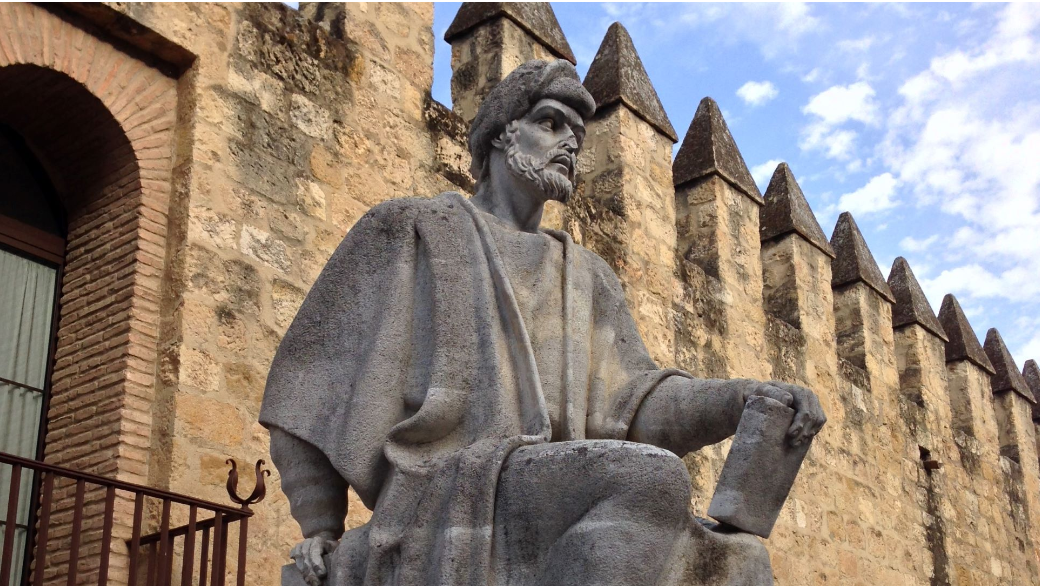 A statue of Ibn Rushd in his home town of Cordoba, Spain (Wikimedia)
A statue of Ibn Rushd in his home town of Cordoba, Spain (Wikimedia)
Averroes Enlightenment Legacy: An intellectual earthquake
Koert Debeuf, director of The Tahrir Institute for Middle East Policy posits that it is high time the West revised the exclusionary narrative of the Renaissance and the Enlightenment and restored the historical truth to its rightful place
Readers of the Divina Commedia of Dante Alighieri could be forgiven for feeling similarly taken aback. In this 14th century Renaissance masterpiece, Dante gives his description of Heaven, Purgatory, and Hell, with a special chapter on Limbo where good non-Christians were allowed to have a decent afterlife. In Limbo, we not only find ancient Greeks and Romans, but also three Muslims: Averroes, Avicenna, and Saladin.
The fact that two Renaissance masterpieces dealing with the foundations of Western civilisation insert Muslims into the mix is odd to say the least. In school, we are taught that the Renaissance, humanism, and the Enlightenment were a purely European accomplishment.
This scenario has humanists like Petrarch rediscovering lost Greek and Roman manuscripts in old abbey libraries, thereby triggering the end of the Middle Ages and thus causing men to re-evaluate the position of the Church and indulge in critical thinking about dogma.
Indebted to the Caliphs of Baghdad
Yet, this historical narrative is simply wrong. Even though Roman books were indeed rediscovered, this was not true of the Greek texts. The most important Greek philosophers and scientists came to Europe because they were translated from Arabic, a translation movement that was initiated by the Caliphs of Baghdad in the eighth century.
At the epicentre were Ptolemy′s astronomy, Euclid′s geometrics and Galen′s medicine. At the same time, Indian and Persian scientific texts were translated. In turn, Muslim scientists wove these ideas together, both elevating them and creating new fields of science, such as chemistry and algebra. Their calculations were the basis of the discoveries of Copernicus and Newton.
No less important at the court of Baghdad was philosophy. Plato and Aristotle were very popular and the subject of much study, discussion, and debate. However, Islamic philosophers ran into the same problem that both preceding Christians and those that would follow faced: how to reconcile philosophy with theology and sacred texts. Saint Augustine who died in 430 AD had halted this debate in Europe in favour of theology: critical thinking had been banned ever since. Those who attempted to re-open this debate were quickly silenced or even excommunicated by the Church. Not so in the Arab World, at least not until the end of the 12th century.
Enter ‘The Commentator’
The last and most famous Muslim philosopher was Ibn Rushd, better known under his Latin name Averroes. He was born in 1126 in Cordoba, the capital of Al Andalus, which had become, alongside Cairo, the intellectual centre of the Muslim world following the decline of Baghdad. In Europe, Averroes was called ′The Commentator′ as he had penned more comments on the work of Aristotle than anyone else. Moreover, it was through the translation of Averroes′ comments into Latin that Aristotle was introduced in Europe.
Averroes caused nothing short of an intellectual earthquake in Europe. His thesis was that there is only one truth, which was reachable in two different ways: through belief, but also through philosophy. When both ways contradict, it means we have to read the sacred texts in an allegorical way. In other words, in the search for truth, philosophy (or science) is more important than belief.
Apart from that, Averroes argued against the immortality of the soul and against creation of the universe.
The theses of Averroes were adopted and taught at the first European universities: Paris, Bologna, Padua, and Oxford. This caused panic within the Church. The force of his arguments and the philosophical concepts of Aristotle were too strong.
In 1277, the bishop of Paris condemned and banned the ideas of Averroes, though not in his own words. He had to copy the arguments of an Islamic opponent of philosophy: Al Ghazali. However, it was Thomas Aquinas who defeated Averroes′ theses in his book ″Against Averroes″ and the ″Summa Theologica″, which did reassert the position of theology above philosophy. Yet, that didn′t halt the spread of Averroes′ ideas and his free-thinking attitude.
Although Catholic thinkers were still writing tirelessly in defense of the immortality of the soul until deep into the 17th century – even Descartes felt it necessary to denounce Averroes, although not very successfully – the ideas of Averroes re-entered European philosophy through the back door of Jewish thinking.
To explain that, we need to step back in time again, to Maimonides. This important Jewish thinker (and
personal physician of Saladin) was a contemporary of Averroes. Confronted with Averroes′ writings, he adopted the former′s philosophy almost entirely. For centuries thereafter, the books of Maimonides were considered standard works in the Jewish world.
The manifesto of the Renaissance
One of the central 15th century Jewish thinkers in Europe was Elia de Medigo, a professor at the university of Padua who referred to himself as a ‘follower of Maimonides’. At the time, Padua was known as a breeding ground of Averroism. There, de Medigo was the teacher of humanist Pico della Mirandola, who wrote the influential ″Oration on the Dignity of Man″(1486), which is often referred to as the ″Manifesto of the Renaissance″.
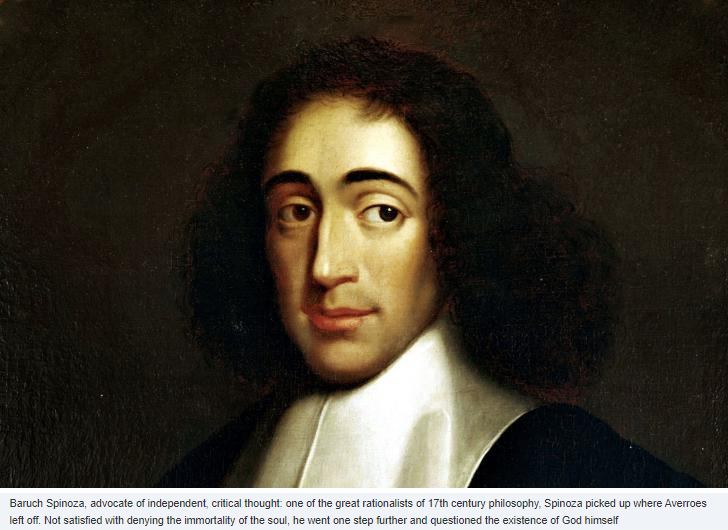 The biography of Pico was immediately translated into English by Thomas More, after Erasmus encouraged him to do so. The so-called Jewish-Christian tradition appears spun through with Islamic influence.
The biography of Pico was immediately translated into English by Thomas More, after Erasmus encouraged him to do so. The so-called Jewish-Christian tradition appears spun through with Islamic influence.
That being said, it is also true that the Arab world has faced an intellectual crisis spanning centuries. Dictatorships and religious bigotry have destroyed Arab science and philosophy, while the West has made spectacular leaps forward.
However, denying the role of the Muslim world in the history of philosophical thought is a violation of history itself. The West cannot be credible if it reproaches others for falsifying history while not doing much better itself. It is time to restore the historical truth its rightful place. Koert Debeuf
For More Information
How Coffee Created The Modern World
How Arabs Revolutionized Western Culture
How Islamic Architecture Transformed Europe
Europe’s Dark Ages Were Islam’s Golden Ages!
How Muslims Transformed Western Civilization
How Muslims Inspired The European Renaissance
When Moors Rescued Europe From The Dark Ages
How The Islamic Golden Age Revolutionized The West
Neenah Payne writes for Activist Post
Become a Patron!
Or support us at SubscribeStar
Donate cryptocurrency HERE
Subscribe to Activist Post for truth, peace, and freedom news. Follow us on SoMee, Telegram, HIVE, Flote, Minds, MeWe, Twitter, Gab, and What Really Happened.
Provide, Protect and Profit from what’s coming! Get a free issue of Counter Markets today.


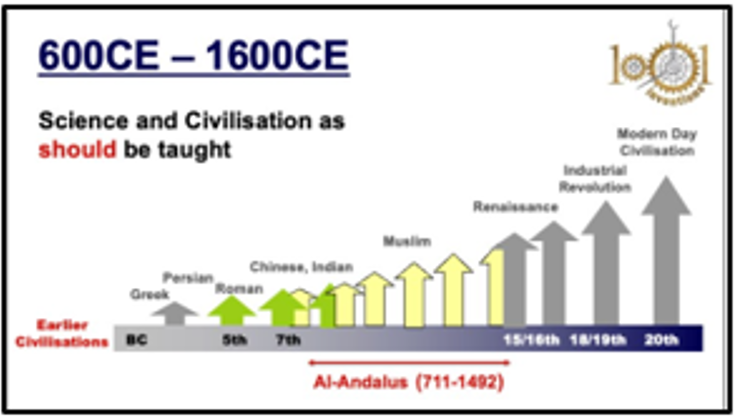
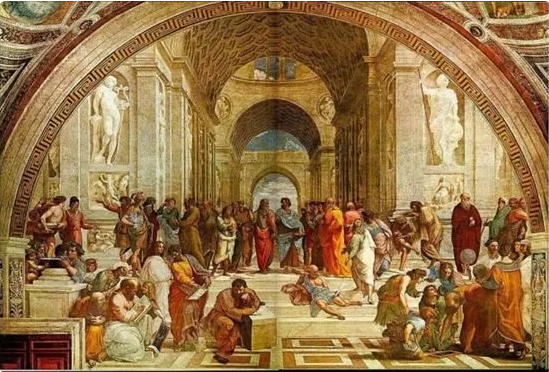

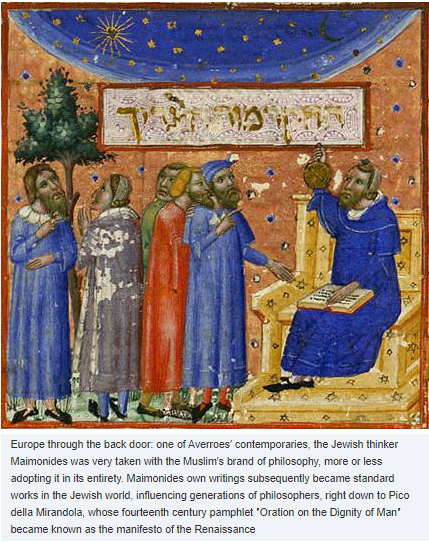
Be the first to comment on "Ibn Rushd/Averroes: Grandfather of European Enlightenment"